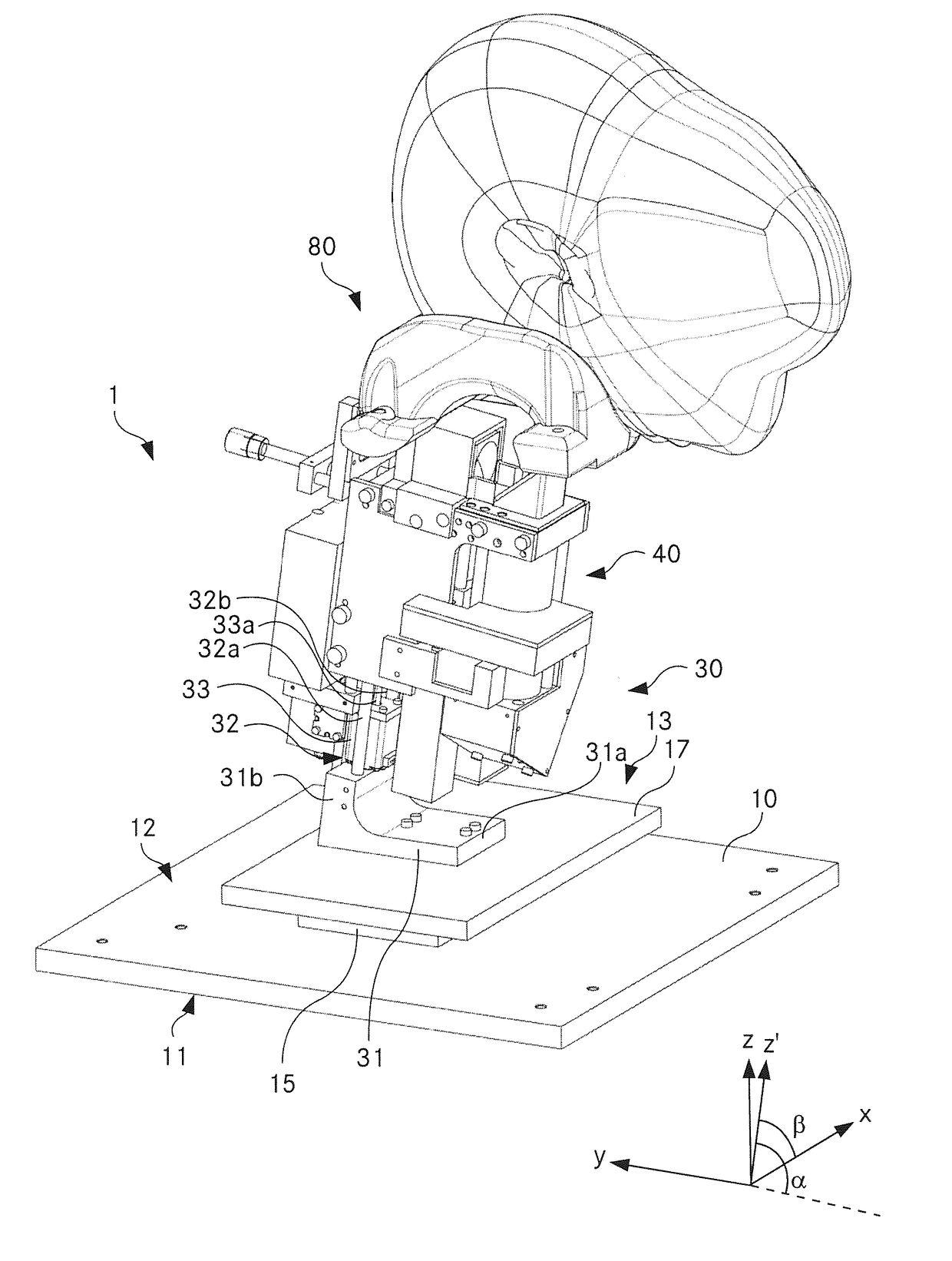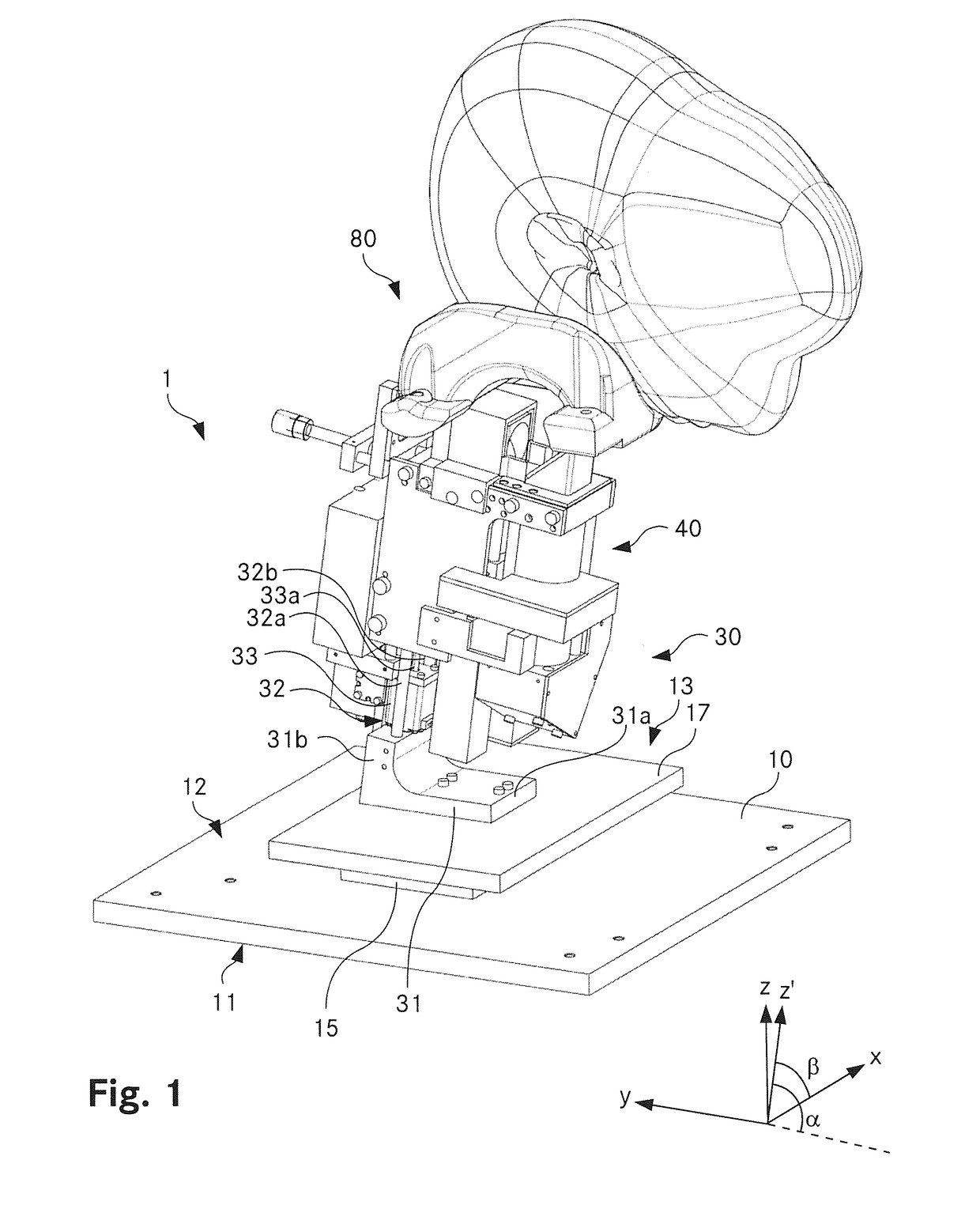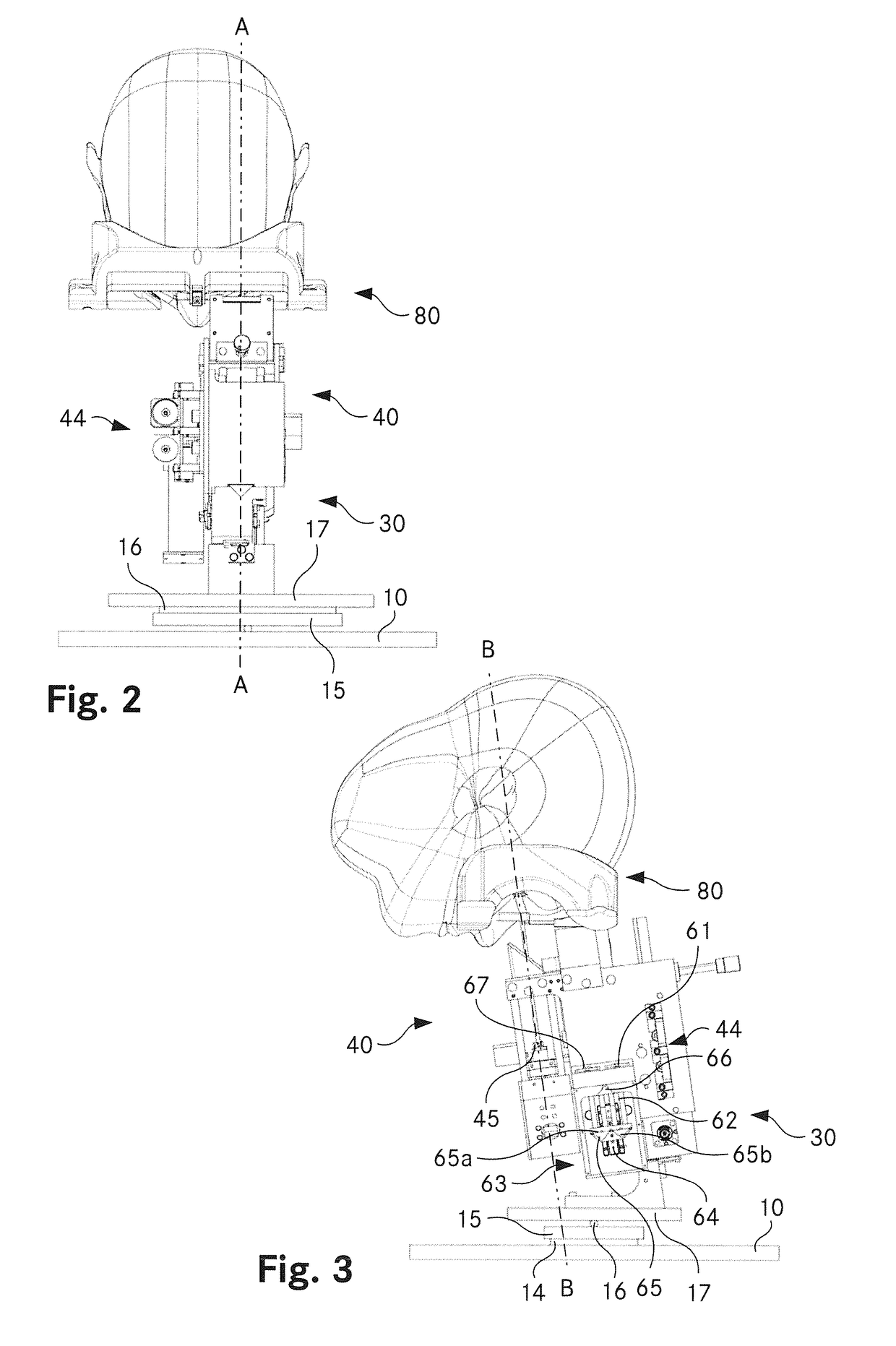Method for the acquisition of optical coherence tomography image data of retina tissue of an eye of a human subject
a technology of optical coherence tomography and eye tissue, which is applied in the field of human eye retina tissue acquisition, can solve the problems of visual dysfunction, scarring of pigment epithelium, deterioration of acuity, etc., and achieve the effect of reliable positioning of the eye to be examined
- Summary
- Abstract
- Description
- Claims
- Application Information
AI Technical Summary
Benefits of technology
Problems solved by technology
Method used
Image
Examples
Embodiment Construction
[0064]FIG. 1 shows an articulated view of an OCT device which is adapted to carry out the inventive method. FIG. 2 shows a frontal view, FIG. 3 a side view of the OCT device, as seen from the right hand side. FIGS. 4 and 5 show cross-sectional views of the OCT device, FIG. 4 in a yz plane A-A shown in FIG. 2, FIG. 5 in the xz′ plane B-B shown in FIG. 3, seen from behind. For simplicity and in order to provide an overview, a housing surrounding the main optical unit as well as a spectrometer has been omitted in the Figures.
[0065]The main components of the OCT device 1 are a base plate 10, an optical unit 30 movable mounted to an upper surface of the base plate 10 and a head support 80 arranged above the optical unit 30.
[0066]The base plate 10 is rectangular and has uniform thickness. Its size is about 40×40 cm. The base plate 10 comprises a lower surface 11, which is a support surface for the OCT device 1 to be put on a flat surface such as a tabletop, and an upper surface 12 to whic...
PUM
 Login to View More
Login to View More Abstract
Description
Claims
Application Information
 Login to View More
Login to View More - R&D
- Intellectual Property
- Life Sciences
- Materials
- Tech Scout
- Unparalleled Data Quality
- Higher Quality Content
- 60% Fewer Hallucinations
Browse by: Latest US Patents, China's latest patents, Technical Efficacy Thesaurus, Application Domain, Technology Topic, Popular Technical Reports.
© 2025 PatSnap. All rights reserved.Legal|Privacy policy|Modern Slavery Act Transparency Statement|Sitemap|About US| Contact US: help@patsnap.com



